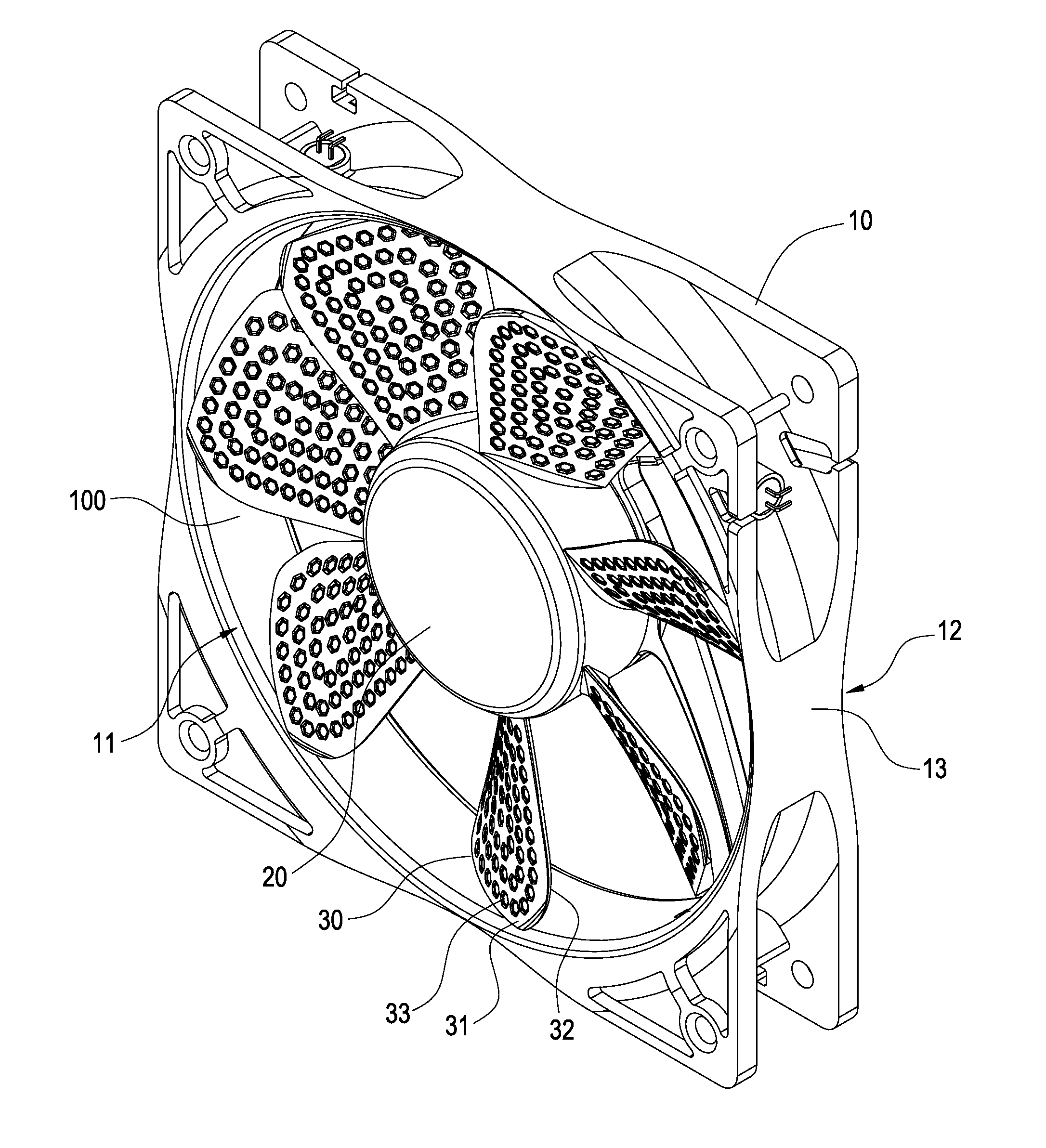Fan structure
- Summary
- Abstract
- Description
- Claims
- Application Information
AI Technical Summary
Benefits of technology
Problems solved by technology
Method used
Image
Examples
Embodiment Construction
[0019]The detailed description and technical contents of the present invention will become apparent with the following detailed description accompanied with related drawings. It is noteworthy to point out that the drawings is provided for the illustration purpose only, but not intended for limiting the scope of the present invention.
[0020]Please refer to FIGS. 1 to 3. The present invention provides a fan 1, which includes a casing 10, a hub 20 and a plurality of blades 30 extending from the periphery of the hub 20.
[0021]The casing 10 is formed into a square frame and has an accommodating space 100 therein. The hub 20 and the plurality of blades 30 are combined in the accommodating space 100. The casing 10 comprises an intake side 11 and an exhaust side 12 opposite to the intake side 11. The peripheries of the intake side 11 and the exhaust side 12 are formed with a recessed portion 13 respectively which is recessed toward the accommodating space 100. In the present embodiment, four ...
PUM
 Login to View More
Login to View More Abstract
Description
Claims
Application Information
 Login to View More
Login to View More - R&D
- Intellectual Property
- Life Sciences
- Materials
- Tech Scout
- Unparalleled Data Quality
- Higher Quality Content
- 60% Fewer Hallucinations
Browse by: Latest US Patents, China's latest patents, Technical Efficacy Thesaurus, Application Domain, Technology Topic, Popular Technical Reports.
© 2025 PatSnap. All rights reserved.Legal|Privacy policy|Modern Slavery Act Transparency Statement|Sitemap|About US| Contact US: help@patsnap.com



